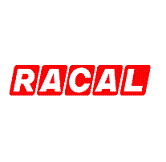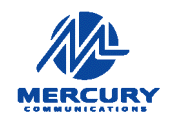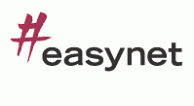
Telefonaktiebolaget LM Ericsson, commonly known as Ericsson, is a Swedish multinational networking and telecommunications company headquartered in Stockholm. The company sells infrastructure, software, and services in information and communications technology for telecommunications service providers and enterprises, including, among others, 3G, 4G, and 5G equipment, and Internet Protocol (IP) and optical transport systems. The company employs around 100,000 people and operates in more than 180 countries. Ericsson has over 57,000 granted patents.

British Aerospace plc (BAe) was a British aircraft, munitions and defence-systems manufacturer. Its head office was at Warwick House in the Farnborough Aerospace Centre in Farnborough, Hampshire. Formed in 1977, in 1999 it purchased Marconi Electronic Systems, the defence electronics and naval shipbuilding subsidiary of the General Electric Company plc, to form BAE Systems.
Marconi Electronic Systems (MES), or GEC-Marconi as it was until 1998, was the defence arm of General Electric Company (GEC). It was demerged from GEC and bought by British Aerospace (BAe) on 30 November 1999 to form BAE Systems. GEC then renamed itself Marconi plc.
The General Electric Company (GEC) was a major British industrial conglomerate involved in consumer and defence electronics, communications, and engineering. The company was founded in 1886, was Britain's largest private employer with over 250,000 employees in the 1980s, and at its peak in the 1990s, made profits of over £1 billion a year.
The Plessey Company plc was a British electronics, defence and telecommunications company. It originated in 1917, growing and diversifying into electronics. It expanded after World War II by acquisition of companies and formed overseas companies.
George Simpson, Baron Simpson of Dunkeld is a British businessman and former Labour - and later unaffiliated - member of the House of Lords. In the late 1980s and early 1990s Simpson gained a reputation for turning around struggling companies. However, as CEO of Marconi plc he presided over one of the largest collapses in British corporate history.

Racal Electronics plc was a British electronics company that was founded in 1950.

Mercury Communications was a national telephone company in the United Kingdom, formed in 1981 as a subsidiary of Cable & Wireless, to challenge the then-monopoly of British Telecom (BT). Although it proved only moderately successful at challenging BT's dominance, it led the way for new communication companies to attempt the same.
System X is the digital switching system installed in telephone exchanges throughout the United Kingdom, from 1980 onwards.
The Marconi Company was a British telecommunications and engineering company that did business under that name from 1963 to 1987. Its roots were in the Wireless Telegraph & Signal Company founded by Italian inventor Guglielmo Marconi in 1897, which underwent several changes in name after mergers and acquisitions. The company was a pioneer of wireless long distance communication and mass media broadcasting, eventually becoming one of the UK's most successful manufacturing companies. In 1999, its defence equipment manufacturing division, Marconi Electronic Systems, merged with British Aerospace (BAe) to form BAE Systems. In 2006, financial difficulties led to the collapse of the remaining company, with the bulk of the business acquired by the Swedish telecommunications company, Ericsson.
Siemens Plessey was the name given to the Plessey assets acquired by Siemens in 1989. Today most of these units are part of BAE Systems while some units are now part of EADS.
GEC Plessey Telecommunications (GPT) was a British manufacturer of telecommunications equipment, notably the System X telephone exchange. The company was founded in 1988 as a joint venture between GEC and the British electronics, defence and telecommunications company Plessey. The next year, after a joint holding company of GEC and the German conglomerate Siemens acquired Plessey, GPT was converted into a 60/40 GEC/Siemens joint venture. The GPT name ceased to be used in the mid-1990s, and in 1998 the company was amalgamated into Siemens Communications.
System Y is the terminology used by BT, the main operator of the telephone network in the United Kingdom, to refer to the Ericsson AXE digital switching system.

Telent Technology Services Limited is a British radio, telecommunications, and digital infrastructure systems installation and services provision company. The name was used from 2006 for those parts of the United Kingdom and German services businesses of Marconi Corporation which had not been acquired by Ericsson. Companies with Marconi in their name can trace their ultimate origins, through mergers and takeovers, to The Marconi Company Ltd, founded by Guglielmo Marconi in 1897 as The Wireless Telegraph & Signal Company.
Siemens Communications was the communications and information business arm of German industrial conglomerate Siemens AG, until 2006. It was the largest division of Siemens, and had two business units – Mobile Networks and Fixed Networks; and Enterprise.

Easynet was a managed services provider and delivered integrated networks, hosting and unified communications services to organisations globally. The company was later renamed Easynet Global Services, and a sister company, Easynet Connect, was founded in 2008 which focused on providing internet access connectivity to small-to-medium size companies in the UK.
Unify, is an Atos company headquartered in Munich, Germany and is present in over 100 countries. The company provides software-based enterprise unified communications including voice, Web collaboration, video conferencing and contact center, networking product and services.

FORE Systems was a computer network switching equipment company based in Pittsburgh, Pennsylvania. Founded in 1990 to supply Asynchronous Transfer Mode (ATM) cards for workstation computers, it soon branched out to become a major supplier in the ATM switch market and the extended those product lines to add Internet Protocol switching and other devices.
Sir John Allen Clark was managing director of the British Plessey Company, an electronics and telecommunications group built up by his father, Allen George Clark. His career with Plessey was dominated by a battle with Arnold Weinstock of GEC for control of the company together with English Electric from the 1960s. This culminated in the late 1980s with the takeover and break-up of Plessey.






